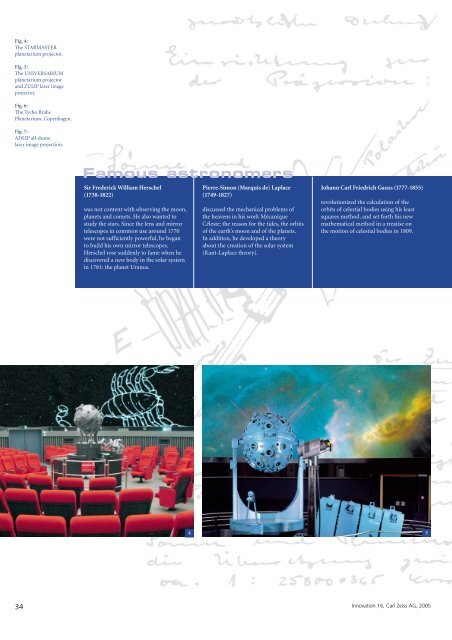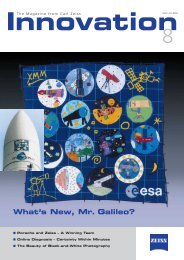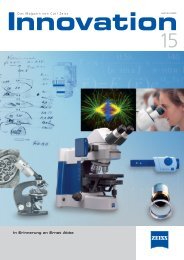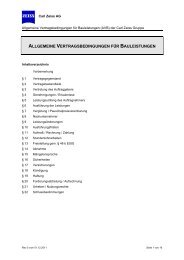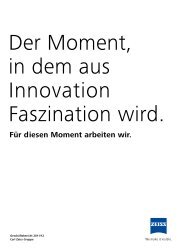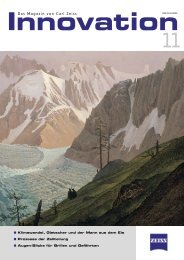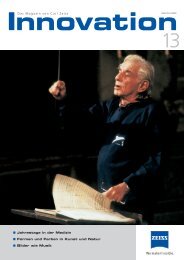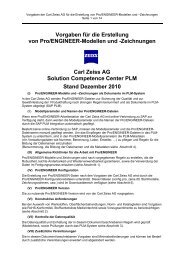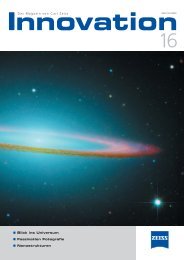Download PDF - Carl Zeiss
Download PDF - Carl Zeiss
Download PDF - Carl Zeiss
Create successful ePaper yourself
Turn your PDF publications into a flip-book with our unique Google optimized e-Paper software.
Fig. 4:<br />
The STARMASTER<br />
planetarium projector.<br />
Fig. 5:<br />
The UNIVERSARIUM<br />
planetarium projector<br />
and ZULIP laser image<br />
projector.<br />
Fig. 6:<br />
The Tycho Brahe<br />
Planetarium, Copenhagen.<br />
Fig. 7:<br />
ADLIP all-dome<br />
laser image projection.<br />
34<br />
Famous astronomers<br />
Sir Frederick William Herschel<br />
(1738-1822)<br />
was not content with observing the moon,<br />
planets and comets. He also wanted to<br />
study the stars. Since the lens and mirror<br />
telescopes in common use around 1770<br />
were not sufficiently powerful, he began<br />
to build his own mirror telescopes.<br />
Herschel rose suddenly to fame when he<br />
discovered a new body in the solar system<br />
in 1781: the planet Uranus.<br />
Pierre-Simon (Marquis de) Laplace<br />
(1749-1827)<br />
discussed the mechanical problems of<br />
the heavens in his work Mécanique<br />
Céleste: the reason for the tides, the orbits<br />
of the earth’s moon and of the planets.<br />
In addition, he developed a theory<br />
about the creation of the solar system<br />
(Kant-Laplace theory).<br />
Johann <strong>Carl</strong> Friedrich Gauss (1777-1855)<br />
revolutionized the calculation of the<br />
orbits of celestial bodies using his least<br />
squares method, and set forth his new<br />
mathematical method in a treatise on<br />
the motion of celestial bodies in 1809.<br />
4 5<br />
Innovation 16, <strong>Carl</strong> <strong>Zeiss</strong> AG, 2005


